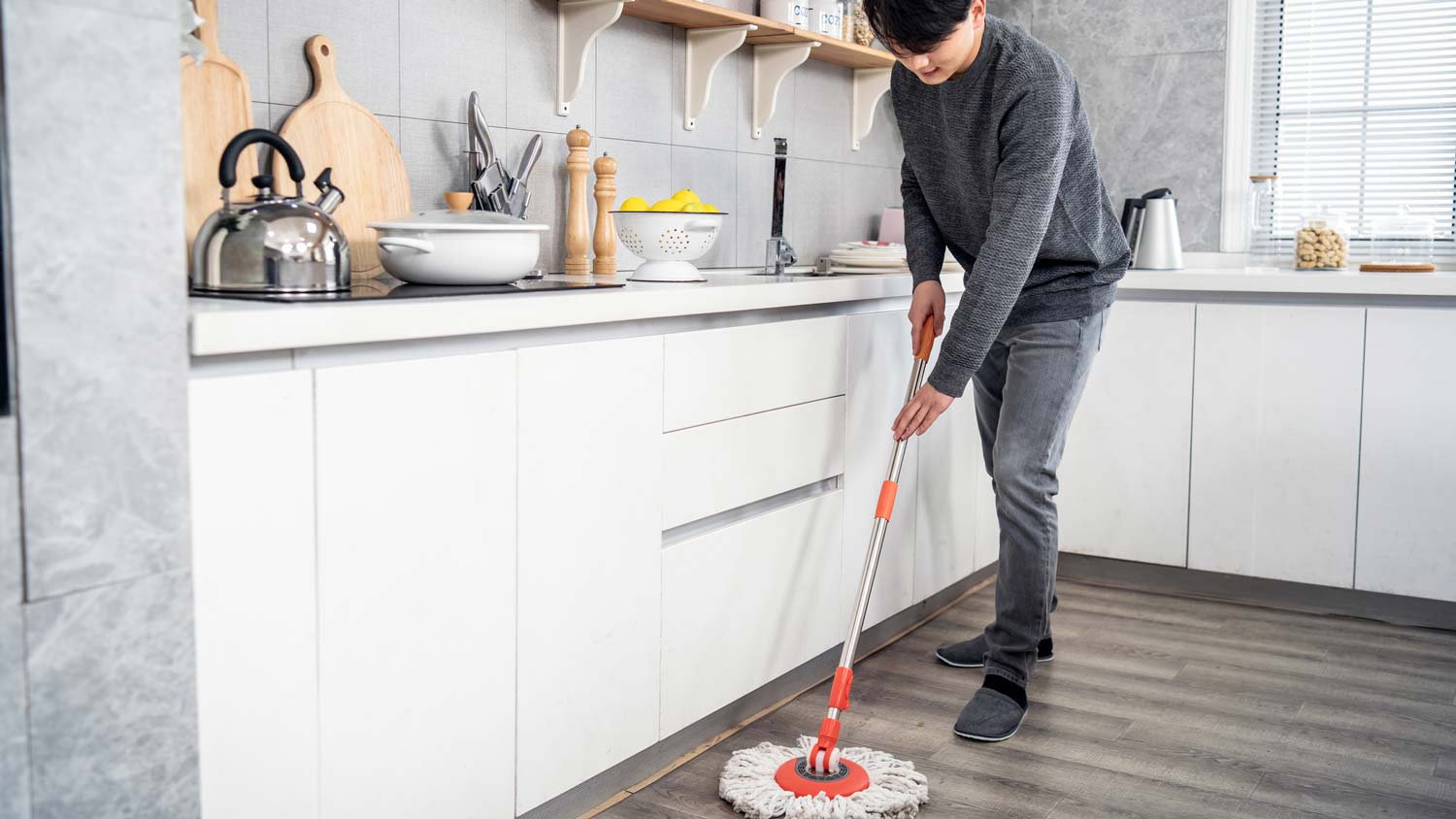
Clean walls are an important part of a well-kept house. Use this wall cleaning cost guide to see what it would cost to hire a professional to get the job done.
Regular care will keep your favorite memory foam items looking and smelling fresh


If you're a devoted memory foam fan, you likely enjoy it in your mattress, mattress topper, pillows, cushions, and even your furry friend's bed. This game-changer of a material may be more supportive of our bodies, but it can also be trickier to clean due to its high density and tendency to absorb moisture. Learning how to clean memory foam is an often-overlooked skill, when in reality, it should be part of your regular house cleaning checklist. Here’s how to do it.
Just like your clothing, nearly all memory foam items feature a care instruction tag. Take a moment to familiarize yourself with it so you know which cleaning methods are recommended. You should never pop memory foam items in the washing machine or soak them through with water. That’s because memory foam is highly absorbent and quite delicate. The more moisture we add to the foam, the more difficult it will be to dry—potentially leading to mold growth and the degradation of the material's structure.

Just like rugs and upholstered furniture, memory foam accumulates dust and dust mites over time, along with pet hair and other debris. Every one to two weeks, vacuum your memory foam items with a flat-head attachment; be sure to get into any crevices.
If you need help remembering to regularly clean your mattress, get into the habit of vacuuming it every time you change the sheets.

Some memory foam items such as pet beds and mattress toppers come with removable covers that can go in the washer and dryer (low heat is usually recommended to avoid shrinking). You should launder these every one to two weeks. The easiest thing to do is to toss them in the wash before you vacuum the memory foam.
Because memory foam is super-absorbent, you’ll want to tackle stains as soon as possible while going easy on the harsh chemicals. We recommend a gentle solution of either:
One part gentle, clear laundry detergent and three parts water
One part baking soda and three parts water
Three drops of clear dishwashing solution and a cup of water
One part white vinegar and 10 parts water
Place any of these solutions in a spray bottle, apply to the stain, and dab—do not scrub—to soak up the stain with a microfiber cloth or paper towel. Move the towel in small, circular motions toward the center of the stain so that it doesn't spread further. Be sure to let the area fully air dry before putting a removable cover back on or, if it’s a mattress, covering it with sheets.

To keep your memory foam looking and smelling fresh, give it a disinfecting clean twice a year. Most memory foam should not be steam cleaned, however. Instead, use a store-bought disinfectant specifically designed for memory foam, or lightly sprinkle the item with a layer of baking soda, then spray with a vinegar-and-water solution. Allow the item to air dry fully, then vacuum thoroughly to remove any baking soda residue. If it’s feasible, bring smaller memory foam items like pillows, pet beds, and mattress toppers outdoors to dry in the sun.
There are situations in which you may need to disinfect more frequently. For example, if your toddler or your pup recently had an accident and you're learning to clean pee out of a mattress, you'll need to go the disinfection route. And because you’re especially up-close-and-personal with a memory foam pillow, we recommend disinfecting it on a monthly basis.
Cleaning memory foam is an incredibly approachable DIY that costs very little to do on your own. But hiring a house cleaner can be worth it when you need a deeper clean all around. Home cleaners cost between $30 and $50 per hour but will offer flat fees for both single and ongoing visits. During these visits, you can request extra care on your memory foam mattress, cushions, and toppers. A house cleaner near you has more experience with tricky materials, and you’ll have one less thing on your to-do list.
From average costs to expert advice, get all the answers you need to get your job done.

Clean walls are an important part of a well-kept house. Use this wall cleaning cost guide to see what it would cost to hire a professional to get the job done.

Cleaning tasks can seem overwhelming. Learn how often you should clean your house to keep it looking its best all year long.

Mattresses can trap dust mites, sweat, and dirt. Learn how to clean a mattress to reduce allergens and extend the life of your mattress.

Construction leaves dust and debris in its wake. If you hire a pro to handle it, here are the post-construction cleanup questions you should be ready to answer.

DIY cleaning solutions can be safe and reliable, not to mention cost effective. Use these tips for cleaning with vinegar and baking soda to reap the benefits.

A moldy dishwasher can cause unpleasant smells and unsanitary dishes. Learn how to clean a moldy dishwasher with this DIY guide.